Want to know why is my brisket dry? The top reasons are that the brisket is too lean, the meat wasn’t brined or injected, the brisket was cooked at too high a temperature for too long, and more!
Even though I have been making brisket for what feels like my whole life, even I have been guilty of dried out brisket on occasion. As such, I have run experiments to discover the top causes and overcome them.
In this post, I will show you why your brisket may be drying out and give you the top tips to resolve these issues. Let’s get started!
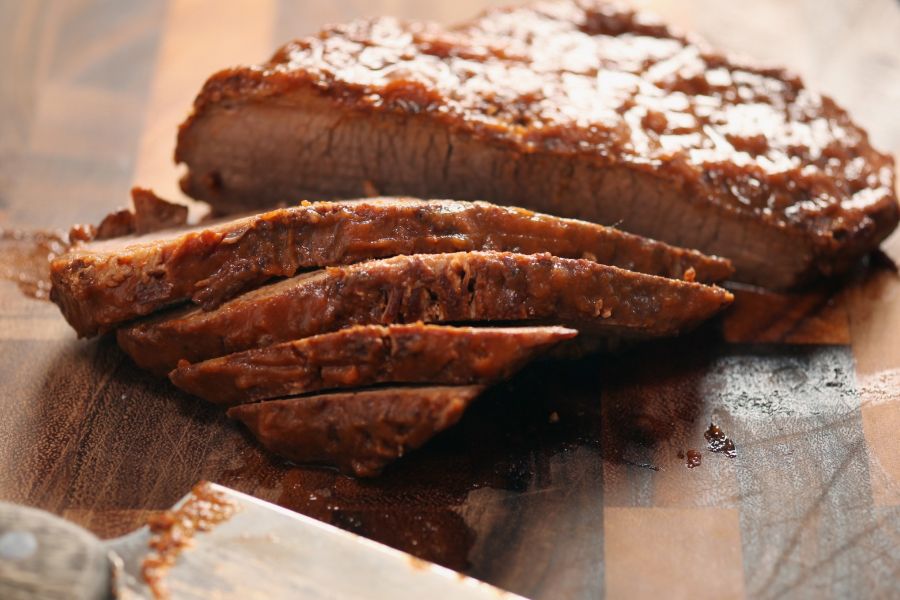
Here are some of the reasons that your beef brisket may have dried out:
The term brisket can be a little too broad sometimes. See, depending on where you live, whole briskets aren’t as common. These cuts can be pretty large and most people don’t want to cook such a large quantity at once.
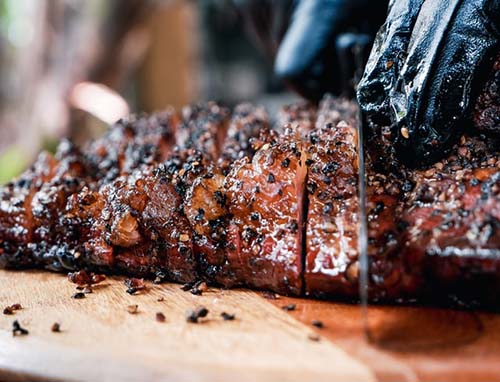
This is why you are most likely to find a flat cut at your butcher’s shop. Known as the first cut, it is one of the muscles that make up a full packer brisket. It is large enough to feed a small crowd but its uniform shape and size make it easier to cook.
Here’s the problem, though: this cut is fairly lean and has very little marbling. This makes it more likely to dry out during the smoking process.
Related Reading
Most brisket cuts will come with a fat cap. Now, this layer of fat is essentially inedible. It is also not rendered when you smoke the brisket either.
To add to this, if the fat cap is too thick, the heat can’t penetrate it properly. This causes your beef brisket to take longer to cook.
Considering all of these issues, you can be forgiven for wanting to get rid of it. However, if you get rid of the entire fat cap then you end up with a dried out brisket.
This is because this layer does offer a modicum of protection from the heat.
There are a lot of people who imagine that brisket doesn’t require any prep work at all. They believe that you simply slap on the dry rub and cook brisket as is.
Well, this isn’t the case at all!
In reality, you need to prep the brisket quite a bit. At the very least, it requires a dry brine. If you would like to take the moistness to another level, then you should consider injecting a marinade as well.
You may have heard of people smoking brisket at a wide variety of temperatures. Some people will even set the temperature above 300 F.
While this can speed up the cooking process, it is also a surefire way to end up with a dry and tough brisket.
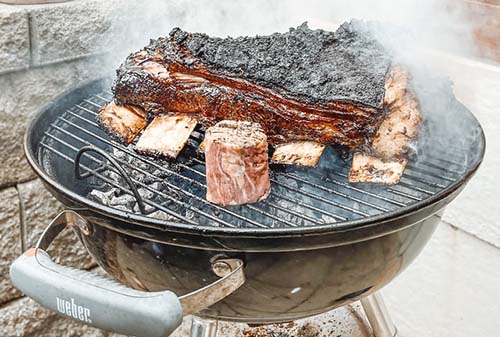
So, why does this happen?
Well, when brisket is cooked at high temperatures, the tissues contract, forcing liquid out of them. When at the surface, the high heat causes the water to evaporate.
Now, some of this is bound to happen even when the brisket is cooked at a lower temperature. However, the moisture loss will be far less great.
The most common reason for wrapping brisket is to help the eat overcome the stall. There is another benefit to this method as well.
See, when you wrap the brisket, you are trapping hot air and moisture inside. This moisture ends up helping the brisket to stay nice and juicy. Thus, you end up with a tender brisket.
A lot of people are worried about undercooking their brisket and I completely understand this. Cook it for too little and you end up with a brisket that is tough to chew.
What many people don’t realize, though, is that overcooking the brisket can cause just as much of an issue.
Remember how I said that meat continues to give out moisture when exposed to heat? Well, when you smoke the brisket for too long, this process continues until there is almost no moisture left in the meat.
I have noticed that people tend to get rather impatient when it comes to brisket. And, I understand, this cut can take a really long time to cook!
Despite this, though, it is important to let the brisket rest. Something very important happens during the resting period.
As I have already mentioned, the tissues squeeze out liquid as the meat is cooked.
However, once the meat is allowed to cool down, these tissues begin to relax. When this happens, the beef brisket is able to reabsorb the liquid that has been lost.
Sliced brisket doesn’t hold up all that well. It has a tendency to lose moisture after the meat has been cut.
Therefore, if you cut the brisket too early or cut it all at the same time, you could be eating dry brisket by the time that it is served.
Here are the main techniques for ensuring that you get a nice and juicy brisket:
Choosing a full brisket is your best option here. This is because it has the right balance between fat and lean meat.
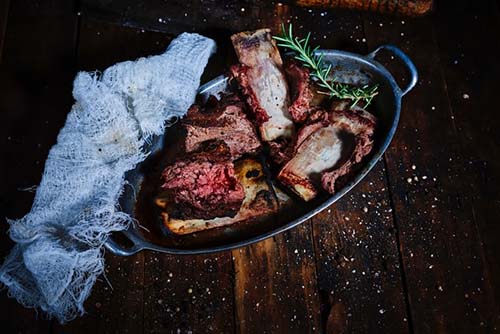
The fat adds moisture and flavor while the lean meat ensures that there is plenty of meat available to feed a crowd.
A whole packer brisket can feel pretty intimidating, but don’t worry. There are smaller cuts – you should be able to find one that is even as small as 4 or 5lbs. Not only is there not as much meat but the cut will cook faster too.
If you really want to ensure that you don’t end up with dry smoked brisket I would suggest choosing a higher grade of brisket.
Brisket is often graded according to the age of the cow as well as the level of marbling. Thus, if you choose a USDA Prime beef, then you do improve your chances of smoking a tender and tasty brisket.
Now, I know that this can be a pretty pricey cut, but I would advise against going with anything lower than a Select grade.
Don’t worry – once you taste how delicious and moist your brisket is you will be happy you made this investment.
It is all about having a fat cap that is just the right thickness. Trim it down so that it is just 1/4th of an inch thick.
This will provide enough insulation so that you won’t end up with a dry brisket. At the same time, it will allow the meat to cook at an appropriate rate.
While you are it, remember to trim any silver skin and gristle from the brisket as well.
It is also a good idea to remove or tuck under any pieces that are less than inch thick. This areas will cook faster and, as such, dry out more quickly than other sections of the brisket.
Dry brining the brisket makes it easier to retain moisture. It is also great for adding flavor to the meat as well.
Luckily for you, a dry brine is incredibly easy. All you need for it is kosher salt. Press the salt into every inch of the brisket and refrigerate.
However, you should be aware that the actual brining process can be pretty lengthy. A mid-sized brisket may need to be refrigerated overnight. A large cut may need to be brined for up to 24 hours.
Thus, this is something that you will need to factor into your prepping and smoking timeline.
Can’t wait for the dry brine to take effect? Not a problem – simply inject a marinade into the brisket.
The great thing about brisket injections is that they work much faster. As you are injecting the liquid directly into the meat, you only have to do this about half an hour before you smoke the brisket.
When choosing a marinade, it is best to keep things simple. Beef broth is your best option as it will not interfere with the natural flavor profile of the brisket. A little of apple cider vinegar may work as well.
If you are planning on injecting and brining the brisket, it is best to avoid any kind of salt in the marinade. instead, opt for a low sodium or salt-free broth.
It is best to set the temperature to either 225 degrees F or 250 degrees F. Avoid going any higher than this when smoking brisket.
If you have an older smoker or grill model and the cooking temperature is quite volatile, monitor the temperature of the cooking chamber with a hood thermometer.
This can ensure that the brisket will cook at the proper rate.
When wrapping the brisket, it is important to do so tightly. Once you are done, you should be able to clearly see the close outline of the cut.
The tighter the wrap, the better the seal created around the brisket. This will ensure that a greater amount of moisture is trapped in between the wrapping and the outer layer of the brisket.
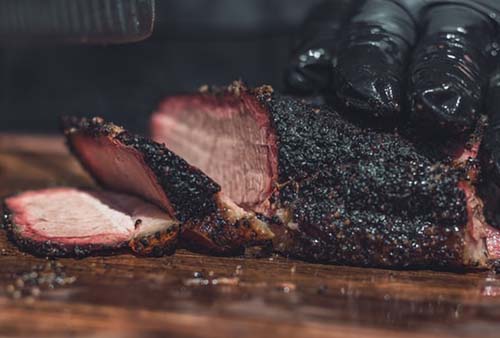
Now, if moisture is your main goal, then I would suggest aluminum foil as your top option, If you prefer a crunchier bark, though, it is best to go with butcher paper as it is a bit more permeable.
If you are dealing with a cheaper cut of meat that is prone to dryness, then I would suggest wrapping the brisket sooner rather later. This will guarantee that the meat is exposed to more moisture and for longer.
Thus, wrap the brisket when it hits the 155 F mark.
You should be tracking the internal temperature of the brisket with a meat thermometer throughout the cooking process.
This is the only way to know when the brisket is done.
Take the brisket out when the internal temperature reaches 203 F.
Don’t be tempted to leave it in any longer as the brisket will continue to cook even once it is removed from the heat source.
Keep the brisket in for even a few minutes more and you can end up with a dry brisket on your hands.
Start your cook early enough so that you have at least an hour to rest the brisket. In reality, though, this isn’t nearly enough time.
If you want the juiciest brisket possible, I would suggest resting the meat for at least two hours. In case you are dealing with a very large cut, it is best to let it rest for about 4 to 6 hours.
As long as you start cooking your brisket early enough, you should be able to accommodate this resting period requirement.
Related Reading
It is only when you are absolutely certain that people are ready to eat that you should slice the brisket. Make sure to slice against the grain as you do so.
As another precaution, only slice as much as you are planning serving or eating at the time. Wait until everyone is ready for seconds before cutting any more sections off.
If you are planning on refrigerating or freezing the leftovers, then make sure to do so as a whole block.
Related Reading
Unfortunately, once the damage is done, you can’t really save the brisket.
What you can do, though, is to repurpose your brisket. If you cook or braise the meat in liquid, you can overcome the dryness.
I like to cook brisket chunks into a beef stew along with broth and some red wine. Or, you can cook it into a shepherd’s pie along with some diced onion.
You can also make chili out of it – all you need is crushed tomatoes, chili powder, and cumin. Serve with sour cream, sweet potato fries, and anything that you like.
Always cook the meat over at a lower temperature. This will give the brisket enough time to reabsorb liquid and become softer.
Related Reading
Your brisket may be dry because it lacks marbling, is cooked at a high temperature, cooked for too long, not wrapped, or not allowed to rest for long enough.
You should brine or inject the meat, set a lower temperature, wrap the meat, take the meat out at the right point, and allow it to rest.
Typically a dry brisket is the result of overcooking.
If you want to make sure that you never end up with another dry brisket, then this is the post for you. Follow these guidelines and you will be able to smoke your brisket so that it is moist and delicious each and every time!